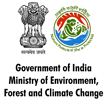Our Mission
The mission of the GEF Small Grants Programme (SGP) in India is to empower local communities, civil society organizations, and grassroots institutions to actively participate in protecting the environment while enhancing their livelihoods and social well-being.
SGP envisions a future where people and nature thrive together, especially in the most vulnerable and ecologically fragile regions of the country. Through the implementation of community-led, innovative, and scalable projects, the programme aims to strengthen socio-ecological resilience, promote inclusive development, and generate global environmental benefits.

कुछ सबसे ज्यादा असुरक्षित और अल्पतम विकसित क्षेत्रों में समुदायों और संगठनों की सामाजिक-पारिस्थितिक लचीलापन को बढ़ाते हुए उन्हें सक्षम बनाना भारत में जीईएफ स्मॉल ग्रांट प्रोग्राम के ऑपरेशनल फेज 7 का ध्येय है। नई तरह के जीविका विकल्पों को बढ़ावा देकर स्थानीय और वैश्विक पर्यावरणीय लाभ उत्पन्न करते हुए, सहभागी लैंडस्केप नियोजन और एकीकृत प्रबंधन विधियों के माध्यम से यह विधि सामूहिक कार्यवाही पर केंद्रित होगी।
स्मॉल ग्रांट प्रोग्राम स्थायी विकास लक्ष्यों (एसडीजी) की प्राप्ति में योगदान करता है। 2012 में रियो डी जनेरियो में स्थायी विकास पर आयोजित संयुक्त राष्ट्र सम्मेलन में तैयार किए गए एसडीजी दस्तावेज़ पर्यावरण, राजनीतिक और आर्थिक चुनौतियों से संबंधित वैश्विक लक्ष्यों का एक समूह है जिसका मनुष्यों के रूप में हम आज सामना कर रहे हैं। विशेष रूप से, 9 एसडीजी की प्राप्ति में योगदान करने के लिए ओपी7 में ज़रूरी कदम उठाए गए हैं, जिनके बारे में आगे बताया गया है:
- एसडीजी 1- गरीबी उन्मूलनः चयनित जिलों में प्रोजेक्ट इंटरवेंशन के माध्यम से, प्राकृतिक संसाधनों, उपयुक्त नई तकनीकों, और माइक्रोफाइनेंस आदि वित्तीय सेवाओं तक स्थानीय समुदायों की पहुंच को मजबूत किया जाएगा।
- एसडीजी 2- भूख का खात्माः इंटरवेंशन के माध्यम से, स्थायी खाद्य उत्पादन प्रणाली को अपनाया जाएगा।
- एसडीजी 5- लैंगिक समानता: महिलाएं, इस प्रोजेक्ट का एक फोकस समूह हैं और ऐसा पूर्वानुमान है कि प्राक्कलित प्रत्यक्ष लाभार्थियों में से 55% महिलाएं होंगी।
- एसडीजी 7- किफायती और स्वच्छ ऊर्जा: किफायती, विश्वसनीय और आधुनिक ऊर्जा सेवाओं तक पहुंच में बढ़ोत्तरी।
- एसडीजी 11- स्थायी शहर और सामुदायिक: प्रोजेक्ट की लैंडस्केप रणनीतियां, सामाजिक समावेशन, संसाधन दक्षता के लिए एकीकृत रूपरेखा प्रदान करेंगी।
- एसडीजी 12- जिम्मेदार उपभोग और उत्पादन: स्थायी भूमि प्रबंधन, संरक्षण कृषि, निम्नीकृत पारिस्थितिक तंत्रों के सहभागी पुनर्स्थापन को लागू करने के माध्यम से; अनुमानित 60,000 हेक्टेयर लैंडस्केप्स को उन्नत प्रबंधन विधियों के अंतर्गत लाया जाएगा।
- एसडीजी 13- जलवायु परिवर्तन: विशेषज्ञ संगठनों के साथ भागीदारी और एनजीओ के साथ पारस्परिक कार्यवाही के माध्यम से क्षमता सृजन और प्रशिक्षण करते हुए स्थानीय समुदायों को जलवायु परिवर्तन में कमी के बारे में जागरूक बनाया जाएगा।
- एसडीजी 14- जलीय जीव-जन्तु भारतीय तटीय क्षेत्रों में प्रोजेक्ट इंटरवेंशन के माध्यम से, सामुद्रिक और तटीय पारिस्थितिक प्रणालियों को संरक्षित और स्थायी ढंग से प्रबंधित किया जाएगा।
- एसडीजी 15- स्थलीय जीव-जन्तु लैंडस्केप रणनीतियों में जैव विविधता मूल्य एकीकृत किए जाएंगे और संरक्षण और उद्धार हस्तक्षेप में सहयोग के लिए सरकार, निजी क्षेत्र और सिविल सोसाइटी द्वारा सह-वित्तपोषण प्रेरित किया जाएगा।




